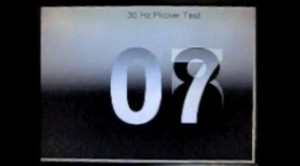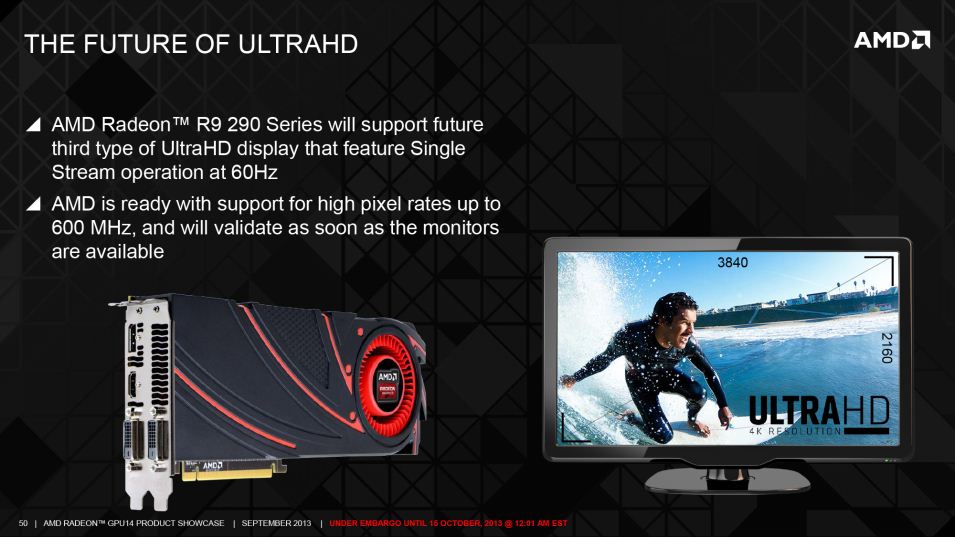Monnie Rock
n00b
- Joined
- Nov 8, 2005
- Messages
- 28
Do any current GPU's support 3840x2160/60p on a single HDMI?
Thank you,
Monnie
Thank you,
Monnie
Follow along with the video below to see how to install our site as a web app on your home screen.
Note: This feature may not be available in some browsers.
Do any current GPU's support 3840x2160/60p on a single HDMI?
Thank you,
Monnie
Me neither.Oh, and this page: http://www.panasonic.com.au/Products/VIERA+televisions/LCD+TVs/TH-L65WT600A/Overview
Shows it has a 2,000 Hz scanning backlight then ( Native 100hz), not sure what that means...


I started out by working with scanning backlights, until I discovered strobed backlights can be superior.Mark, I remember when you first started this all saying that a scanning backlight was superior to a strobing backlight.
MOTION BLUR: Strobe backlights are easier.Is that based off of this "type" of scanning backlight, or all strobing backlights superior to scanning backlights?
If so, why do manufacturers even bother with scanning backlights? Is it cheaper/easier to implement/easier on the eyes, combination of the above?

Got a response back from Panasonic:
"Thank you for your inquiry.
The TV was designed with the option of setting the Picture Mode to "Game". Regrettably, the Owner's Manual is yet to be made available online. "
That is kinda vague. Game mode could mean it simply adjusts contrast etc and not latency / bypass electronics. And if game mode DOES bypass all the input lag inducing electronics, does that mean all of the "neat" features like local LED dimming, 60->120 frame creation, scanning backlight all turn off and reverts it back to a simple 60 Hz basic 4K display? Could you keep a scanning backlight without the 120 Hz upconvert?
Have you tested the Sony's "Motionflow Impulse" feature during PC/Game Mode?I currently have the Sony 4k set and it is a great set and image is fantastic
So we are up in the air. I know that CNET does include Input Lag in their reviews, but who knows when they will review it.
I currently own the Sony XBR 4k 65" set....I also just got back from Best Buy arranging delivery of the Panasonic and a pick up of the Sony set. Make of that what you will! lol
They should have talked about the Panasonic's unrivaled color accuracy and how it perfectly matches industry color standards (REC 709 & REC 20 20).
Awesome. Hope you can test out the Displayport and verify that this is the first display to do 4K over SST.
There is no way the Panasonic will cover 100% of Rec 2020. No commercially available wide gamut display has ever exceeded 92% coverage.
Mitsubishi could probably do it first if the resurrected their Mitsubishi LaserVue DLP TVs and tweak the blue laser, but that is not going to happen.
Not sure what you mean by it being the first set to do 4k over SST?
Would you mind explaining what that means to me so I know what to look for?
Currently all 4K Monitors that have a DisplayPort only work at 4K using MST (Multi Stream Transport). This means that the monitor appears as to the GPU as two 1920x2160 streams and requires the use of multi-monitor functionality (eyefinity, Nvidia Surround-esque hack, etc).
This could be the very first 4K display to work without tiling and instead with SST (Single Stream Transport).
Connect the display via DisplayPort. Then check the screen resolution in the Control Panel.
If you have an AMD card and it looks like this:
http://www.pcper.com/image/view/28587?return=node/57940
If you see 1|2 then it is MST. If you just see a 1 then it is SST.
As for Nvidia, I am not quite sure, they put in this weird hack/whitelist into their driver to support 4K tiled monitors while still not allowing 2x1 surround.
http://www.pcper.com/image/view/28591?return=node/57940
Though if they didn't add the EDID to their whitelist you may find out pretty fast.
With either card, keep an eye out for artifacts in the middle of the screen (tearing, etc) that may indicate a multi-monitor setup.
Is this just a Display Port thing? Because I did run the Sony at 4k resolution albeit at 30fps using HDMI and it did not have a split screen in the control panel.
HDMI 1.4 on the Sony 4k does not have a split screen. I have used it a few times and there is no split screen when using 4k @30fps.
That is not what he is inquiring about. No one cares about 4K at 30 Hz via HDMI 1.4. The huge boon of this TV is that it could possibly run 4K at 60 Hz via a single DP cable with a single stream. This is akin to the drivers and windows seeing it as a "true" single monitor, and not two separate displays like all current 4K displays are configured.
So you have the set inbound for delivery? That is sweet. We can show you what to test! Besides the single stream connectivity, input lag and motion clarity are two other main attributes us computer folks will be dying to know about..
I could literally plug in a laptop in the store and figure most of this stuff out in two minutes or so. I have to call some Magnolia's around me, but I don't have a laptop.

Disappointing.
So let me see if I have this straight, DP 1.2 was released at the end of 2009 with enough bandwidth for 4K 60p over a single stream. Yet the first controllers to support this are only coming out in 2014 or even 2015? Ouch.
Meanwhile the first HDMI controllers supporting 4K 60p (over a single stream) are coming out in displays now.
It is too bad no existing hardware supports HDMI 2.0.

Radeon R9 290X listed between $549 and $729 - http://www.fudzilla.com/home/item/32788-radeon-r9-290x-listed-between-$549-and-$729
I figure HDMI 2.0 still being 3 lanes so with the clock patcher you should be able to do it with current cards.Well that stinks. All 4K displays will need to be treated as NVIDIA Surround or AMD Eyefinity until 2014/2015? Man I hate the display sector! They are always dragging their feet on everything. Especially when it comes to connectivity standards and controller boards.
While not a deal breaker for me to try the set, it is a little less appealing now. Still the largest things for me are; how is the input lag and motion blur at native 4K/60Hz.
Another issue, is this SST/MST issue Displayport only? As far as I am aware DP is the only packet-based display connection and HDMI 2.0 should not have this issue.
So right now, we have GPU's that can output 4K@60Hz DP in SST but no TV's to accept the signal, and we have HDMI 2.0 TV input but no GPU outputs to send out the signal. Talk about a cluster...
...they would be perfect.
It is MST. When you first boot the computer you get two images, side by side of the exact same thing as the Bios boots. Then when the windows logo shows up you also get a side by side of the same image. Once this disappears, the TV gives the "no signal" image, then immediately the Windows's image appears full screen. Going into the "set resolution" screen it appears as one screen.

people can't tell the difference between 720p and 1080p sets at typical viewing distances usually, on sub-70" tvs.